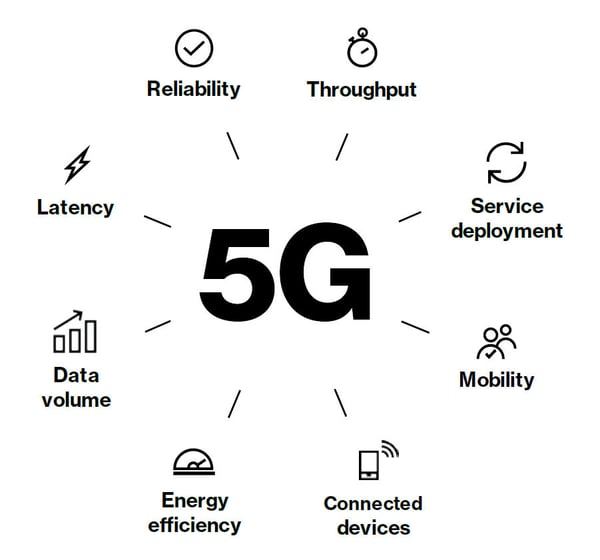Now that we’re starting to move beyond the hype around 5G and dig into what its introduction and eventual ubiquity will mean, we can see immediate and obvious benefits around fairly standard performance improvements, such as faster data speeds. Users will be able to, for example, download video faster on their mobile devices. This is great, but it’s not the seismic shift we’ve been promised.
Where 5G is going to stand out as revolutionary rather than evolutionary is in its latency-reduction capabilities. If you can nearly nullify response times by significantly reducing network communication lags, you enter a new world of possibilities. If we assume that the big game-changing aspect of 5G is its ability to shatter long-standing latency barriers, a whole host of new use cases is on the table, from self-driving vehicles to robotics to interactive multiplayer mobile gaming. Across industries, there are use cases requiring instant response times, and 5G can deliver. But 5G alone is not going to make these things a reality.
On the edge of enabling real-time 5G experiencesFor as long as we have been hearing about the promise of 5G, we’ve also been hearing about edge computing and the internet of things. The convergence of 5G, edge and IoT is where we’ll finally begin to see near-real-time applications of these technologies. Enabling them to work seamlessly and at scale, the rules of the game are changing. |

source: https://www.onetalkportal.com |
The shifting future of the CDN
It’s accepted canon that delivering content to users is fastest if done from a location as near to them as possible via CDNs. Content delivery networks are predicated on this idea, and enterprises capitalize on the ability to locate their edge caches strategically to optimize the content delivery experience. The traditional CDN architecture is made up of potentially hundreds of global PoPs, which - despite their purported aim of reducing latency for media, streaming and e-commerce - will not be able to deliver as needed in the 5G world. Indeed a shared-service CDN has limited bandwidth allocated to mobile, making them ill-suited to 5G development.
The landscape has already begun to shift away from the one-size-fits-all CDN model, as more companies have opted to build their own CDNs or mix and match commercial and private CDNs to meet the specific needs of their users and use cases. With content becoming increasingly dynamic, and often machine-to-machine in its communication, speed and latency have taken a front seat in terms of how important instantaneous delivery and processing are. Likewise, as mobile devices (and machines) come to dominate how content is accessed, the ground on which the traditional CDN was built is starting to look less stable. Traditional CDN providers will start to feel pressure to keep up with 5G to respond to consumer demand, and even more acutely when more future-oriented robotic/automated use cases become the norm.
With 5G networks, true edge computing becomes possible as minimal latency and efficient, dynamic caching layers meet the needs of emerging use cases and begin to render standard CDNs obsolete.
The CDN is dead… long live the CDN?
Most data being distributed over the traditional internet today will, in order to provide a true 5G experience, have to be cached at the edge of 5G networks. And this is where we revisit the statement we made in the beginning: 5G cannot deliver the true 5G experience by itself. At least not in the revolutionary way it’s been touted to do. To facilitate this new world of real-time use cases, telco vendors are talking about “telco clouds” - that is, connecting 5G antennas via high-speed fiber to a telco data center in the cloud. This changes the scope of what companies can do. Everything from putting data, such as a video library, inside a telco data center to give end-users ultra-low-latency (milliseconds) access to stream with high bandwidth (up to 100s of Gbit/sec) to real-time streaming to real-time interaction (between online gamers or between autonomous machines). How we consume streaming media will change forever.
Powering this will be a whole new breed of content delivery network: Are we just around the corner from welcoming the world’s highest performing 5G edge-computing CDN?
/VS-logo-2020-197x60.png?width=136&height=60&name=VS-logo-2020-197x60.png)

